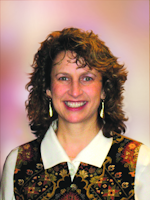CARLSBAD, CA--Ischemic stroke, a condition that occurs when blood supply leading to the brain is blocked by a blood clot, affects over 600,000 individuals each year in the U.S. alone according to the American Heart Association. The result is brain damage, which can result in disabling injury or death.
“There is only one FDA approved treatment for stroke, Genentech’s tPA, which was approved in 1987,” says Arthur T. Taylor, the new president and CEO at PhotoThera, a company working on an infrared (IR) energy-based remedy. “TPA, a thrombolytic or ‘clot buster,’ is an effective treatment--but only if administered within three hours after the stroke occurs. Because of the short treatment time window, less than 4% of stroke victims make it to the hospital in time,” he said.
Jackson Streeter M.D. founded PhotoThera in 1997; he had become intrigued by the therapeutic potential of IR energy during his service as a Naval flight surgeon. A November 2007 BusinessWeek article, “A Top Gun Takes Aim at Strokes,” explained that Streeter “left his dream job as a fighter pilot to tackle the second leading cause of death” after reading about the technology in “an obscure Hungarian medical journal.” Streeter’s company is pioneering the treatment of various diseases and health conditions, but its initial clinical focus is acute ischemic stroke.
Nesting NTS
PhotoThera’s first product delivers noninvasive transcranial treatment for patients within 24 hours of stroke onset. That product, NeuroThera System (NTS) is an investigational device (that is, not approved for sale or distribution anywhere in the world) that seeks to improve neurological outcomes. The system consists of a moveable console, a fiber optic cable, and a handpiece. A trained clinician uses the handpiece to direct the energy--a.k.a. transcranial laser therapy (TLT)--to 20 predetermined treatment sites on a patient’s scalp. The total procedure time is approximately 2–3 hours.
To date, PhotoThera has completed two clinical trials, NeuroThera Effectiveness and Safety Trial-1 (NEST-1) and NEST-2. Both studies were double blind, multicenter, randomized, sham-controlled evaluations. NEST-1, completed in 2006, was a 120 patient study that demonstrated initial safety and effectiveness of TLT when patients were treated within 24 hours of stroke onset. NEST-2, completed in 2008, was a 660 patient study that confirmed the safety profile found in NEST-1. Although NEST-2 did not achieve statistical significance on the primary endpoint, the trial did meet statistical significance for patients with moderate to moderately severe strokes.
This past February, University of California San Diego professor of Neurosciences Justin Zivin, M.D., Ph.D.--who served as principal investigator for NEST-2--presented the followup study results at the American Heart Association’s International Stroke Conference in San Diego, CA. Within the next 6–12 months, PhotoThera will launch NEST-3, a phase III international clinical trial with refined patient selection criteria. Zivin will co-chair the NEST-3 steering committee along with professor Werner Hacke, M.D., Ph.D., chairman of Neurology at the University of Heidelberg (Germany). According to Hacke, “TLT is one of the most promising new therapies that we’ve seen in a long time, especially as it may expand the treatment window for ischemic stroke to 24 hours.”
“The trial will need to show effectiveness in treating stroke patients that have suffered moderate to moderately severe strokes within 24 hours after the stroke,” said Taylor. “Once the trial is complete, the company is required to submit a premarket approval (PMA) application to the Food and Drug Administration (FDA).” He expects FDA approval two to four years after that.
Funding and leadership
PhotoThera announced a $50 million Series D round of financing, led by leading global private equity firm Warburg Pincus, on April 30. “The Series D funding is expected to finance the NEST-3 study,” Taylor said.
Warburg Pincus began funding PhotoThera three years earlier, in April 2006, when it joined Delphi Ventures, DeNovo Ventures, and others in closing a $30.5 million round of Series C venture financing. Two years prior, in May 2004, PhotoThera announced $19 million in funding.
With each of the last two funding rounds, PhotoThera has welcomed a new president and CEO--a role initially filled by Streeter. In 2006 the company appointed Thomas C. Wilder III to the position; according to a company statement announcing Taylor’s appointment, Wilder left to pursue other opportunities after successfully securing the Series D funding. Taylor most recently served as VP and general manager for the Kyphon Products, Spinal & Biologics Business of Medtronic. Taylor has more experience in the medical device industry too: He was CFO of the hearing health company ReSound, and held executive positions with Allergan and American Hospital Supply Corporation.
“With the strong foundation Tom Wilder helped to build and the addition to the team of Art’s deep operating expertise, I believe we are well positioned to take full advantage of our promising NEST-2 results with the launch of NEST-3 to secure the necessary data to support commercialization of our TLT technology,” said Streeter.

Barbara Gefvert | Editor-in-Chief, BioOptics World (2008-2020)
Barbara G. Gefvert has been a science and technology editor and writer since 1987, and served as editor in chief on multiple publications, including Sensors magazine for nearly a decade.